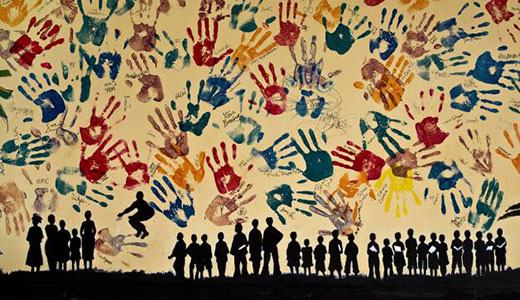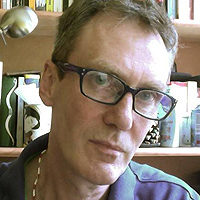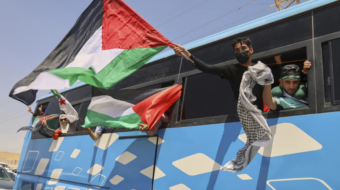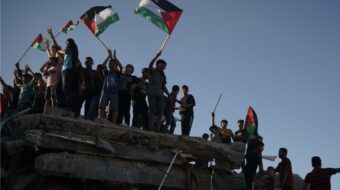
(Editor’s Note: April 7th marked the 20th anniversary of the Rwanda genocide.)
PRETORIA – In 1994, as the nearly 100-days of genocide unfolded that killed about a million people in Rwanda from Apr. 7 to mid-July, press coverage and international reactions to the carnage were very much business as usual.
Rwanda was almost exclusively seen in terms of a grand narrative of African catastrophe. “Hunger and disease take up where a vicious war left off,” was Time Magazine’s glib take on the immediate aftermath of the genocide, spectacularly failing to pinpoint what had happened and why. The title to the piece “Cry the Forsaken Country” referenced another era of African tragedy, Alan Paton’s Cry the Beloved Country about apartheid South Africa.
As with so much media coverage of Africa’s problems, the events in Rwanda were wearily depicted by Time as one more tragedy in the endless litany of seemingly inevitable African cataclysms. The subtext throughout was that nothing could be done. In reality, the international community saw only what it wanted to.
World leaders and the UN were irresolute and more concerned to ensure the safe withdrawal of any Western presence in Rwanda. It took the Clinton administration until a month after the highly systematic genocide was in full swing to decry cautiously “acts of genocide”.
Twenty years on, accounts of the Rwanda genocide – mainly of members of the Tutsi minority population at the hands of Hutu militants – take better account of why it was that the UN and others failed to act or even say anything much. News media coverage discusses the pros and cons of humanitarian intervention in the form of ramped up peacekeeping. More fingers are retrospectively pointed at governments’ and the UN’s inability to seize the initiative in crises.
There is however a deeper analysis of why the genocide happened. The Rwandan government program Kwibuka20 (kwibuka means “remember” in Kinyarwanda) stresses the planned nature of the genocide, countering the usual impression that it “just happened”.
The effort to wipe out the Tutsi population was concerted, involving government and military leaders, the Catholic Church and top civil society leaders. The UN ignored repeated warnings of the genocide and kept only a minimal peacekeeping presence in Rwanda.
The later French-led humanitarian mission to create a safe passage for Tutsis to Zaire (now Democratic Republic of Congo) allowed thousands of the perpetrators to the genocide to escape. Thousands of Hutus, who did not support Hutu Power (an extreme nationalist ideology) political parties or viewpoint, also perished.
This tends to undercut the media’s conventional wisdom view of a purely spontaneous explosion of “inter-ethnic” conflict. But the Rwandan government’s marketing of the genocide memorial is as much to do with polishing its own image as it is with remembering the victims.
Unequal Tutsi-Hutu relations have a long history, rooted in part in the position the former acquired as aristocratic overseers of the majority Hutus. This was an inequality consciously fostered by German and, following World War I, Belgian colonialism. In the 17th century, what is now Rwanda comprised some eight kingdoms under a common communal economy, the most prominent of which was ruled by the Tutsi Nyiginya clan.
Belgian colonial administration was based on established divide-and-rule principles, and in Rwanda it pioneered Tutsi supremacy over the larger Hutu population. Tutsis were put in charge of much colonial management, being responsible for tax collection and administering brutal colonial justice.
Communal agriculture, once equally shared by both groups, was dismantled and converted to cash crop production. The Belgians created a false historical record of Tutsi tribal aristocratic supremacy over the dominated Hutus.
The two groups had to carry identity cards stipulating their “ethnic origin”, another invention. Quite arbitrarily, Tutsi’s were designated as cattle owners, a class above the Hutus, who were categorised lower down the scale as farmers.
This creation of two antagonistic social classes had a massive impact on Rwandan society, laying the basis for conflict between Tutsis and Hutus that persisted beyond independence in 1962, and degenerated into civil war.
Tens of thousands of Tutsis had been forced to flee the country in the face of sporadic massacres by Hutus. During the ’70s and ’80s, they launched attacks from neighboring countries on the autocratic Hutu administration headed by Juvénal Habyarimana.
In 1990, the Tutsi-dominated Rwandan Patriotic Front (RPF) invaded the north of Rwanda, leading to all-out civil war. After a ceasefire was agreed in 1992, Habyarimana was forced into a coalition with the opposition under the Arusha peace accords brokered in 1993 by the U.S. France and the Organization for African Unity (OAU).
Habyarimana was killed when his plane was shot down on April 6, 1994. The next day the pogroms against the Tutsi population started, also targeting Hutus who did not support Hutu Power’s ideological groupings or political parties.
Accounts differ over whether Habyarimana was killed by the RPF, which did not want to see him remain in power under the transitional government, or by Hutu Power elements seeking an excuse to eliminate the Tutsis.
But the dire state of relations between Hutus and Tutsi was not only a product of colonial rule that played out through bloody civil conflict in subsequent decades.
It was exacerbated by economic factors driven by Western interests. Chief of these was the collapse of the coffee market at the end of the 1980s, when the International Coffee Agreement, which set quotas from coffee producing countries, unravelled due to pressure from U.S .coffee traders. The price of coffee dropped by over 50 percent devastating Rwanda’s economy.
The country became heavily dependent on donor funding, subject to masses of conditions on the running of the country and the economy, which did nothing to address the tattered social-economic fabric, despite being shot through with imported rhetoric and rules about human rights and good governance.
IMF-World Bank lending had been replaced by “structural adjustment” along free market lines that failed to prioritise agricultural development or food production. The IMF also demanded heavy devaluations of the local currency, which drove up the prices of fuel and consumer essentials.
By the eve of April 7, 1994, there had been plenty of warnings that the Hutu administration was planning mass killings of Tutus. Isolated and seemingly uncoordinated massacres had already happened in August 1993.
Between 1992 and early 1994 warnings about Hutu plans to eliminate the Tutsi population came from a variety of sources. They included Belgian law professor Filip Reyntjens in a press conference at the Belgian senate, the Belgian ambassador to Kigali, Human Rights Watch and the International Federation for Human Rights, the UN Special Rapporteur on Summary, Arbitrary, and Extrajudicial Executions, and the commander of the UN Assistance Mission in Rwanda.
Once underway, the genocide was easily coordinated, with orders emanating from the capital through local government structures and using radio stations to issue orders to massacre Tutsi’s and their supporters. Most of the roughly million people who were murdered were hacked to death with machetes or bludgeoned with clubs.
The ID cards introduced by the Belgians long before that people had to carry stating their “ethnicity”, and which were still in use, came in handy for identifying targets. There was nothing else to distinguish Tutsis from Hutus, who have a common language and have no physical differences to tell them apart.
The RPF started to fight back from its base in the north of the country, but only entered Kigali on July 4. The current RPF government in Rwanda marks this date as the end of the genocide, or 88 days after it began, though it continued for some weeks.
Today, Rwanda is held by some to be the poster child for Africa’s dynamic resurgence. Former UK Prime Minister Tony Blair has lauded Rwanda’s comparative stability: “Rwandans are increasingly united. There is a strong patriotism and belief in the government – almost nine in 10 say they ‘trust in the leadership of their country'”.
But Filip Reyntjens, who in 1992 forewarned about the coming genocide, says that the price of this stability and trust is “structural violence” in Rwandan society.
This comes in the form of the destruction of civil society, ethnic discrimination (this time against Hutus), the concentration of power and wealth in the hands of a few, and human rights violations at home and abroad. “In years to come, this may well lead to renewed acute violence”, he says, and warns that once again the international community is looking the other way.
Photo: A mural created by Rwandan students symbolizing post-genocide unity. Ben Curtis/AP










